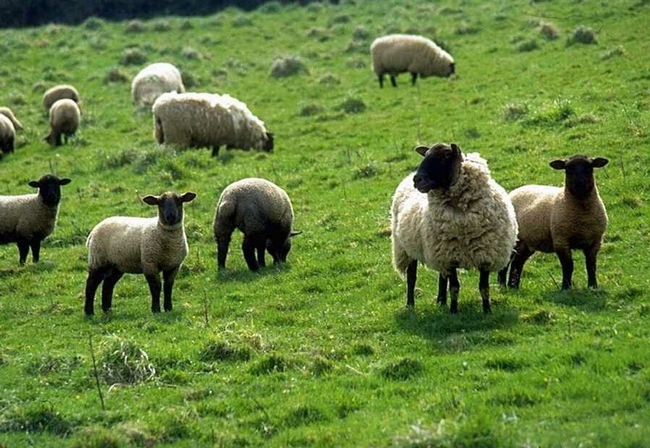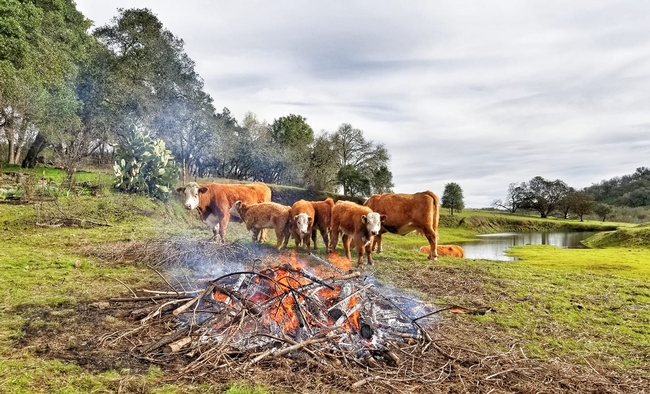- Author: Stephanie Larson
Valuable forage for livestock and wildlife is often lost on rangelands after wildfires. What should landowners, affected by recent fires, do to migrate the impacts to their rangelands - oak savannas, chaparrals and woodlands, which have undoubtedly lost grass production from recent fires?
The effect the fire has on the resulting vegetation and production can vary based on the timing and intensity of the fire, and the quality, quantity and type of forage and subsequent rainfall.
Estimating Loss
Estimating the cost of such losses cannot be based on traditional grazing rental rates for livestock because the impact of forage production is more for ranching than the impact of grazing. All residual dry matter (RDM) is removed with fire, and the soil profile is disturbed. In addition to the loss of forage, the next 2 years of forage production could be impacted along with the length of adequate forage-growing periods and species competition.
University of California Cooperative Extension (UCCE) publication 8446 Estimating the Cost of Replacing Forage Losses on Annual Rangeland can be downloaded free of charge to assist with calculating ranch losses and help reporting to the USDA Farm Service Agency (FSA). A UCCE advisor can assist with completing forage loss calculations and reporting requirements to FSA. In addition, the Natural Resources Conservation Service (NRCS) offers financial assistance in the form of a cost share (EQIP) for reseeding rangeland. This program is valuable because it provides enough financial help to make the practice economical.
When calculating losses most often the equivalent in hay is considered in monetizing the forage loss value (1 ton of forage lost = the cost of a ton of hay). USDA releases a weekly Direct Hay Report that can be used to determine the cost of replacement forage. This is usually the most practical method, but there are other costs to consider.
Assistance from the FSA and NRCS can assist landowners in replacing forage loss, livestock, and fences. Check with our local FSA county office to make sure that all production acreage is on file so that it is covered, and that all applicable programs are signed up for. In many cases, there are deadlines to file for assistance that are put in place once losses occur.
Seeding
A fire, one occurring late summer or early fall, can burn the RDM remaining following the grazing season. With RDM burned, there is a higher chance of erosion after the first rains, especially if early rains are heavy. Erosion control is essential to prevent or control water and soil erosion on lands, especially those with steeper slopes. Effective erosion control techniques will inhibit surface runoff and are important measures to prevent water pollution and soil loss.
The type of seeding depends on your resource goals. If you want to reseed following a fire, contact our UCCE office to assist in designing the most appropriate mix. Site conditions, management, and rainfall vary between properties which can change appropriate seeding recommendations. It is worth getting this part right, otherwise the effort may be wasted. It is generally recommended to use a blend containing a mix of annuals, which will germinate early and assist with holding the soil, along with perennials which are long lived grasses that are productive, but require specific management for success.
Seeding is best be done immediately prior to fall rains as grass fires don't provide enough ash for broadcasted seed to make good seed to soil contact allowing for seed to be adequately covered. No till drilling seed is best or if broadcasting, cover the seed with a harrow after broadcasting. Broadcast seeding too early can results in birds eating the seed prior to germination. Flying seed on with an airplane should be done just prior to rain.
If an establishment of desirable forage species already existed, seeding may not be necessary since grass fires that occur in summer or later should have little effect on mature seed laying on the soil surface. This would negate much of the benefit in seeding; however, production will still be less due to the lack of soil cover, particularly if it's a dry winter. Fires that occurred in higher brush densities can get hot enough to affect seed on the soil surface. Their advantage is that they do provide a nutrient rich seed bed and source of cover for seed to fall into. Reseeding these areas can be successful by dropping seed into the white ash. Because weed competition is usually eliminated by these hot fires, and fertility is high, these seedings have been successful in the past.
Hydro Seeding
Hydro seeding (or hydraulic mulch seeding, hydro-mulching, hydra seeding) is a planting process that uses a slurry of seeds and mulch. It is often used as an erosion control technique on construction sites, as an alternative to the traditional process of broadcasting or sowing dry seed, or on recently burned areas, on sites that have high erosion potential following a fire.
Links
- UCCE Sonoma email: cesonoma@ucanr.edu
- NRCS Petaluma office: (707) 794-1242 ext 107
- FSA Petaluma office: (707) 664-8593
- Author: Karen Giovannini

Matchmaking grazing animals with grass and rangelands
Professional grazing of overgrown rangelands, pastures and parcels is proven to reduce the spread of dangerous and costly wildfires.
Do you have land but no livestock and feel concerned about fire fuels on your property? Or are you a livestock owner that can provide a grazing service and/or need land and forage for your animals? Match.Graze can help.
Match.Graze is a free online platform connecting landowners statewide who want grazing animals to livestock owners with animals that can provide vegetation management services, created by UC Cooperative Extension.
From small semi-rural communities to large open spaces, grazing can provide an affordable solution to the inevitable accumulation of fire fuels. Grazing can be more cost-effective for reducing fuels on landscapes that are too steep, rocky or remote for mowing or chemical treatment, or in the wildland-urban interface where burning is not an option.
“I've noticed on several fires, including extreme fires, the fence lines where the fire just stopped. And the one variable, the one difference, was grazing,” said Marshall Turbeville, CAL FIRE battalion chief.
Cattle, sheep, goats and other grazing animals all have different roles to play in grazing for fire fuel reduction. If you want to use livestock to help reduce fire risk in your area, visit MatchGraze.com.
“Every property is different and requires thoughtful consideration of how it should best be grazed,” said Stephanie Larson, director of UCCE in Sonoma County, UCCE livestock and range management advisor and co-creator of the livestock-land matchmaking service. “UC Cooperative Extension is here to serve, put Match.Graze to work and let's prevent catastrophic fire while helping landowners and agriculture.”
To find a local grazing partner, visit MatchGraze.com,
set up a free account, create a pin on the map and make a match.
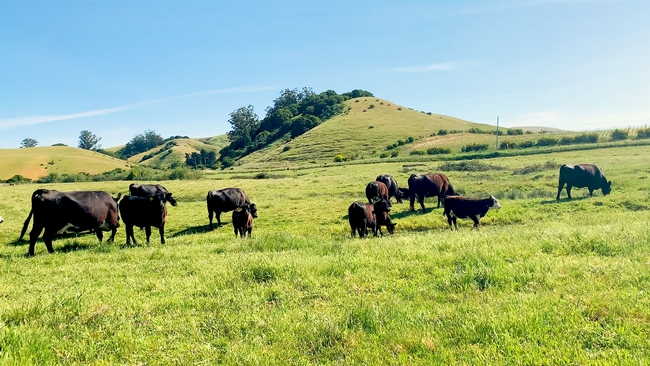
- Author: Stephanie Larson
- Editor: Karen Giovannini
Producers experiencing this damage may be eligible for assistance.
Crane flies, Tipula oleracea, are once again present on Sonoma and Marin County's range, pasture and cultivated lands this season. I have seen their presence only 3 times during my career, but when in large numbers, the done significant damage. The seasonably warm, average 68 degrees, November, followed by a December that lack proper chilling days, resulting in the survival of excessive Crane fly larvae. Weather conditions have led to current infestations on range, pasture and cultivated lands. Larvae are usually killed when a hard frost occurs during the winter season. During this season, we did not experience an adequate frost to kill the larvae; resulting in a large larvae survival.
Larvae winter in the soil, and when the weather warms, they resume feeding (and damaging fields).
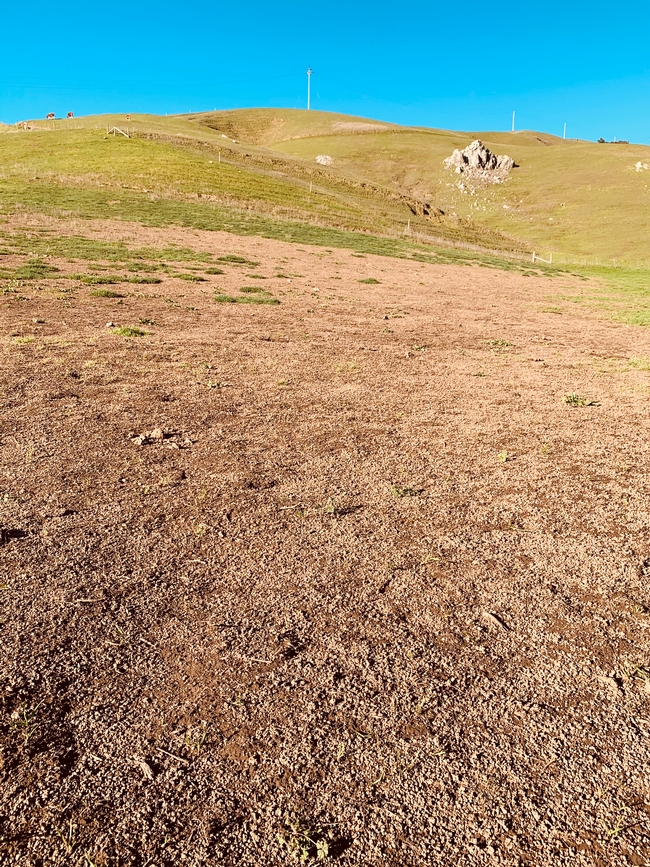
Larvae are consuming forage at an alarming rate. During the day larvae mostly stay underground but on damp, warm nights they come to the surface to feed above ground parts of many plants. The larvae vary in size, but at maturity are 1 to 1 ½ inches long. Producers are reporting many areas, completely denuded of forage. In areas affect, there 100% loss. Around mid-May, larvae wriggle to the surface and the adults emerge; there is one generation a year. The larvae are the damaging stage of this pest (Figure 2).
"This is why we need Cooperative Extension; they came out to assess the damage to our silage field and quickly determined the cause of the problem. They provided assistance and support to reduce the impact of our forage losses." Jennifer Beretta, Beretta Family Organic Dairy.
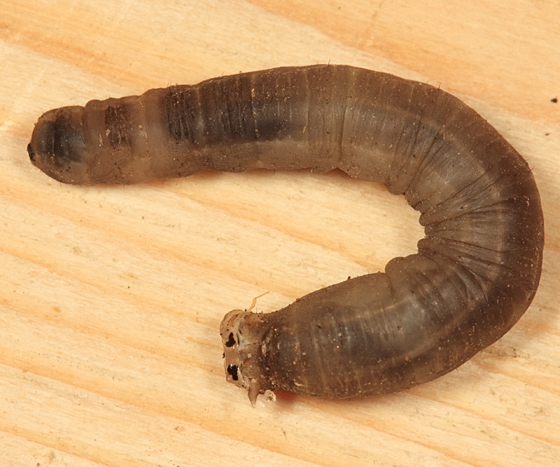
Identify
To determine if these patches are from larvae infestations, dig at the edge of bare ground and grass, 1-2 inches below the surface, larvae will usually be found at the base of the vegetative layer (thatch) or in the soil just beneath the plants. They will be anywhere from ½ to 1 inches in length.
Control
Control options are limited, especially if the land is under organic production. Beneficial nematodes can be spread on the land to reduce the larvae infestations. Unfortunately, this method results in only 50% control. Organic sprays can also be used, but their efficacy has not be researched in California. Discing bare ground might expose larvae to predators such as birds and predaceous ground beetles and other natural causes. The use of chickens might also be effective if they are able to scratch the ground to get the larvae.
Bare patches of ground can be seeded, if done early. Given it is so late in the growing season, reseeding with annual species, to prevent weed infestations or soil erosion, will be the best option. You can graze the silage crop in order to recoup forage losses.
Assistance
All affected producers should contact the Farm Service Agency, Cecilia Medina, ana.medina@usda.gov, 707-644-8593, on programs for forage losses. The Emergency Livestock Assistance Program (ELAP), is available to producers when forage losses can be attributed to weather up to 180 days per year. Weather is the cause for the infestation of Tipula oleracea infestation (see table below). Contact Cecilia as soon as possible; she can assist in filing a notice of loss. Their office is located at 1301 Redwood Way, Petaluma.
|
January 2020 |
Avg. Temps 58/37| Rainfall total of 1.94 (Santa Rosa, CA) |
|
December 2019 |
Avg. Temps 57/42 | Rainfall total of 7.01 (Santa Rosa, CA) |
|
November 2019 |
Avg. Temps 68/36 | Rainfall total of 1.47 (Santa Rosa, CA) Another Frost Warning was issued on Thanksgiving night: https://www.pressdemocrat.com/news/local/10387442-181/freeze-warning-issued-for-north?sba=AAS |
|
October 2019 |
On October 30, 2019 a Frost Advisory was issued in Sonoma County; https://www.pressdemocrat.com/news/10240107-181/frost-advisory-issued-as-parts?sba=AAS |
If you are under organic certification, contact your local certifier. They need to know that you are experiencing a forage loss emergency.
If you need additional assistance, field visit or support letter of loss from UCCE, please contact me, at slarson@ucanr.edu or Randi Black, rablack@ucanr.edu
Additional Information
UC IPM Crane Fly Fact Sheet
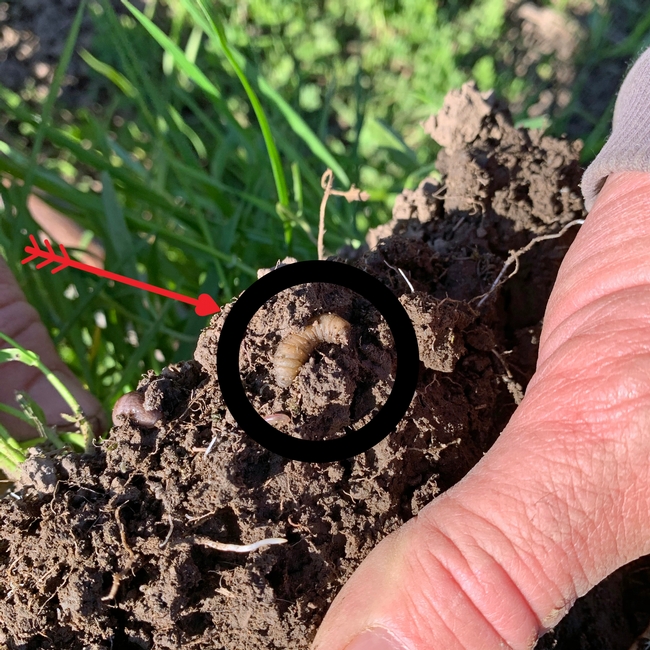
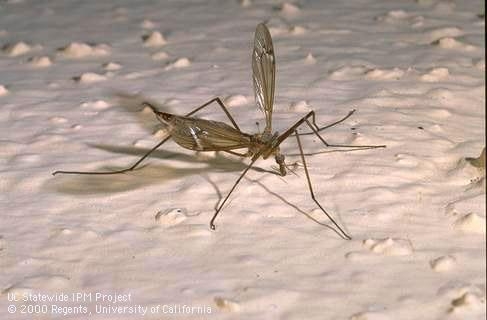
- Author: Karen Giovannini

Stephanie is the Livestock & Range Management Advisor for Sonoma and Marin Counties, where she conducts education and research to integrate dairy and livestock production with rangeland management and helps local producers to improve production and marketing. She is also the Director of the UCCE Sonoma County office. Read her bio here.
Welcome!
